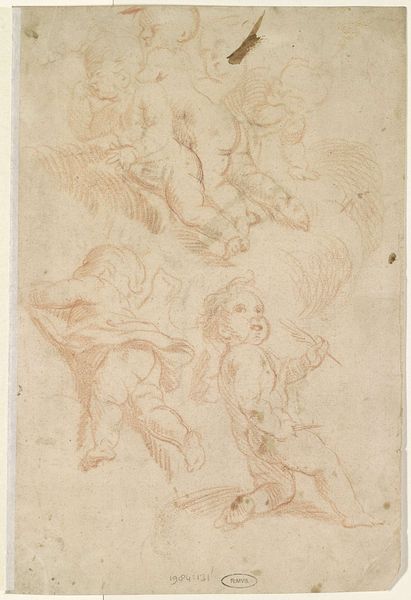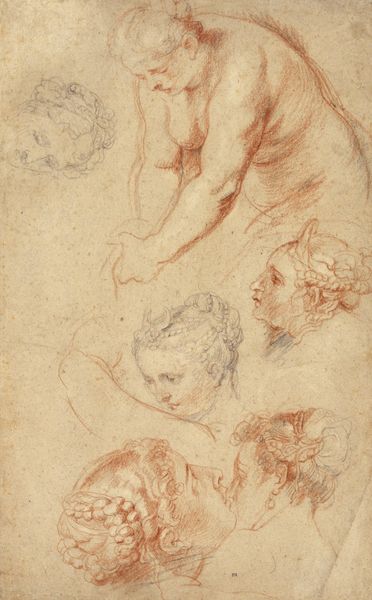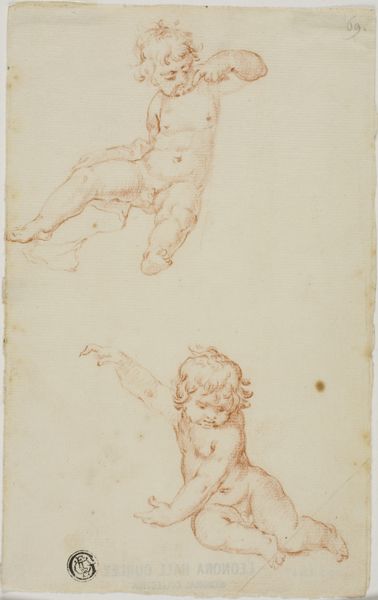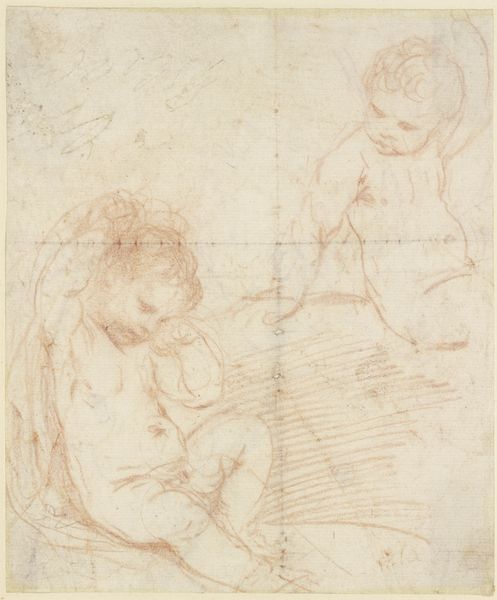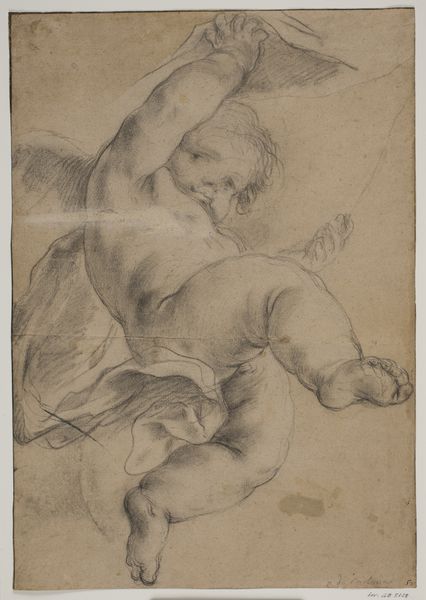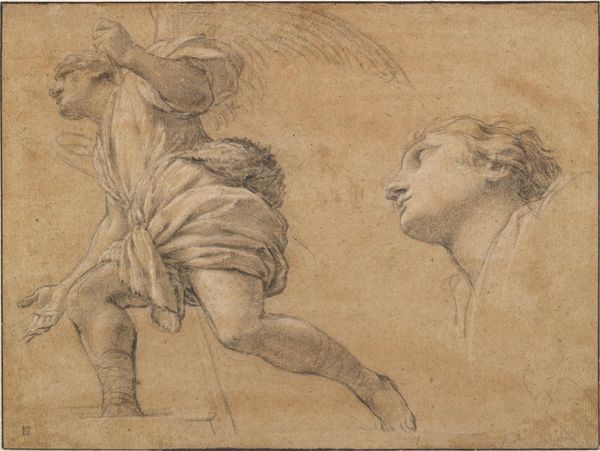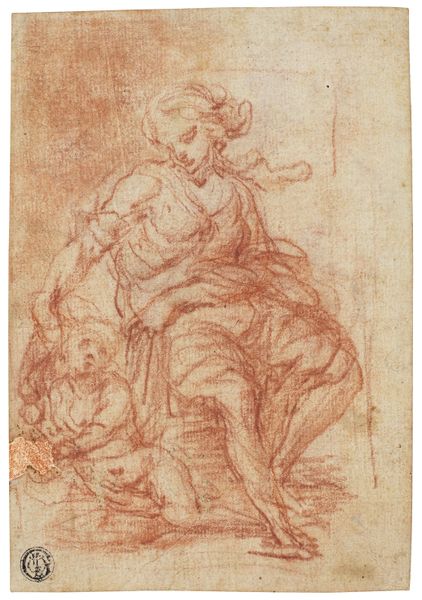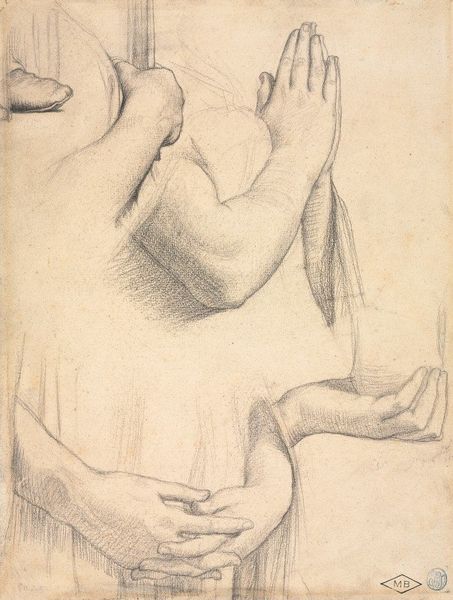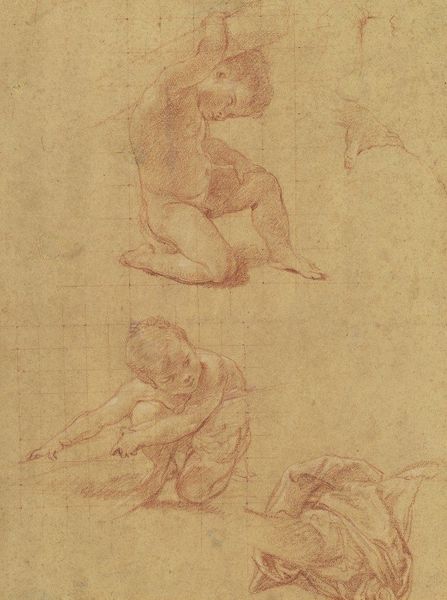
drawing, print, pencil
#
portrait
#
drawing
#
baroque
# print
#
figuration
#
pencil drawing
#
underpainting
#
pencil
#
france
#
academic-art
Dimensions: 14 3/16 x 9 13/16 in. (36 x 25 cm.)
Copyright: Public Domain
Curator: This work, currently residing here at the Met, is "Two Muses" by Charles Le Brun, rendered sometime between 1630 and 1690 using pencil. It’s rather arresting. Editor: It certainly evokes a specific mood. There is a looseness and ease that speaks to both a freedom of style but also to the labor required in planning for this composition. Do you think it a successful example of Baroque academicism? Curator: Indeed. The preparatory quality, a key facet of academic art, is clearly visible in the unfinished portions of the sketch. Consider how the interplay of line and shadow sculpts these figures, endowing them with a sculptural weightiness characteristic of the Baroque. The material’s very accessibility allowed the artist to quickly realize the ideas and experiment with them, wouldn't you say? Editor: Exactly! But this 'accessibility' relies upon a global network of extraction and manufacturing. I see paper, likely linen or hemp-based, crafted in specific mills—and pencils, the product of graphite mines traded between colonies... This isn't mere aesthetic consideration; it’s about resource exploitation too. Curator: But focusing primarily on that, one could overlook the careful consideration of classical ideals so fundamental to Le Brun's output. His use of figuration and anatomical rendering seeks to attain a sort of idealized perfection—to convey meaning beyond mere material presence. Consider the upward gaze of the lower muse and the pipes being played above... Le Brun evokes inspiration, striving for sublime beauty. Editor: Well, to see "inspiration" there assumes a singular meaning! What materials afforded might challenge "sublime" interpretations. Did Le Brun have to alter his process or choice due to the availability of materials, and would his creative practice been fundamentally impacted if only charcoal, for instance, had been readily available. Curator: The interplay between constraints and the realization of vision. It's the balance between those things which informs this print. Editor: Ultimately it allows me to appreciate the material traces of human intention in all its complexity. Curator: And for me, that same material holds evidence of classical idealism so deeply interwoven into Western art.
Comments
No comments
Be the first to comment and join the conversation on the ultimate creative platform.
